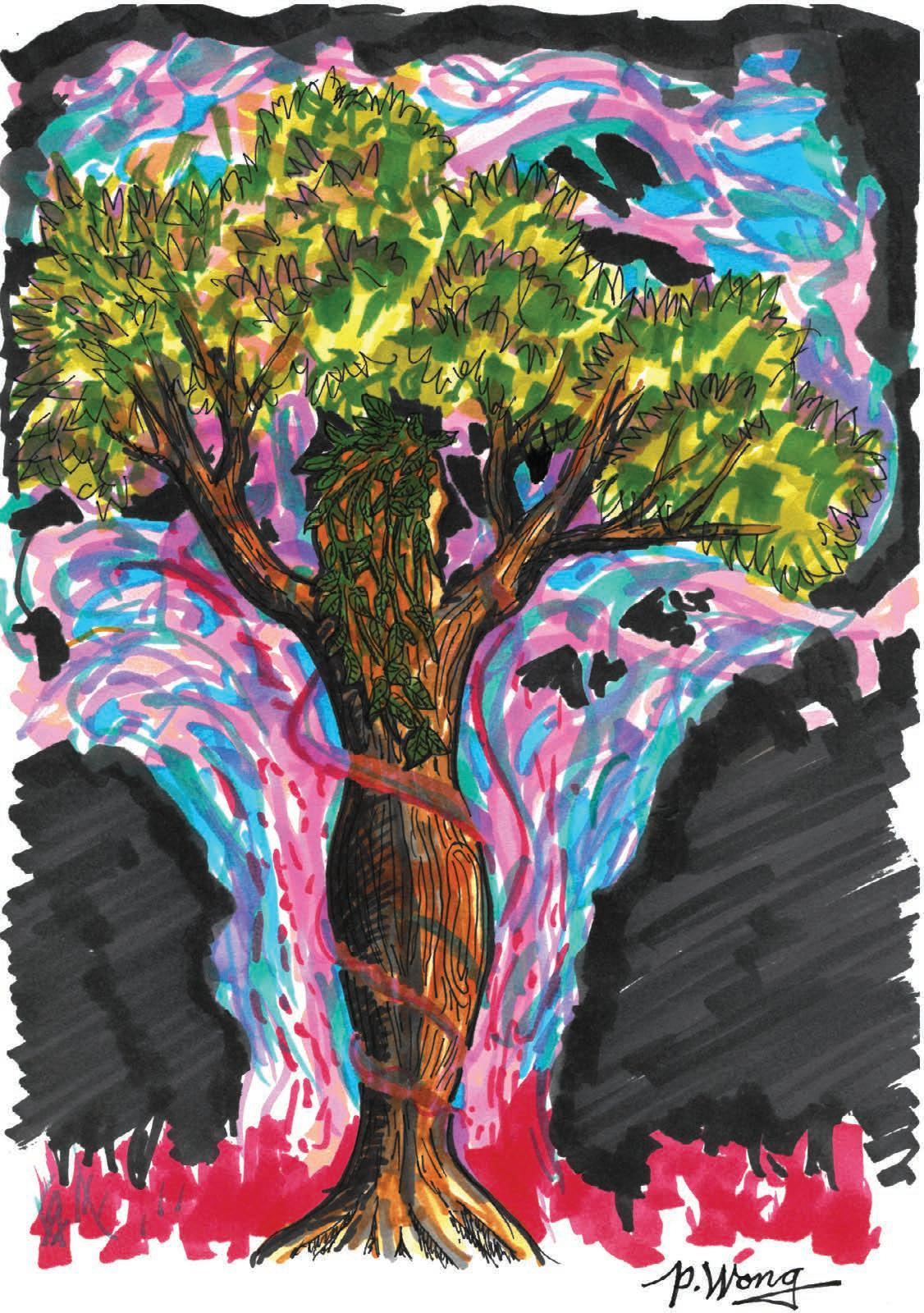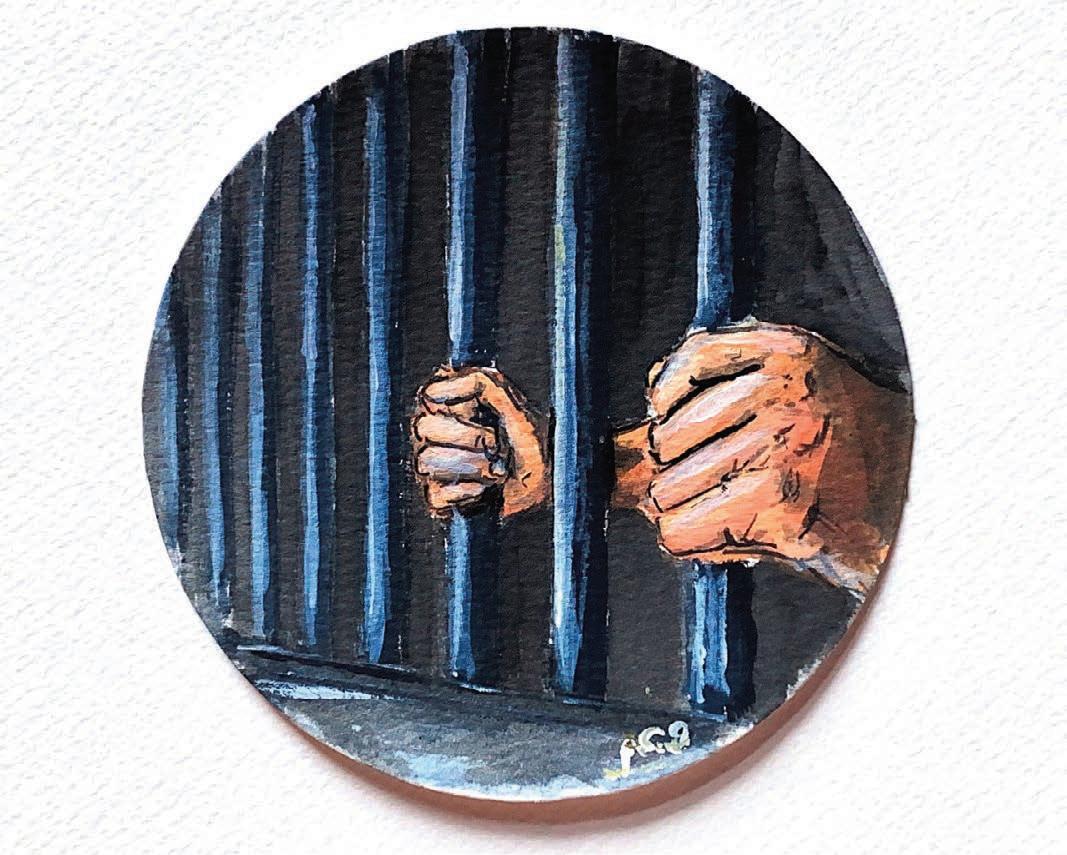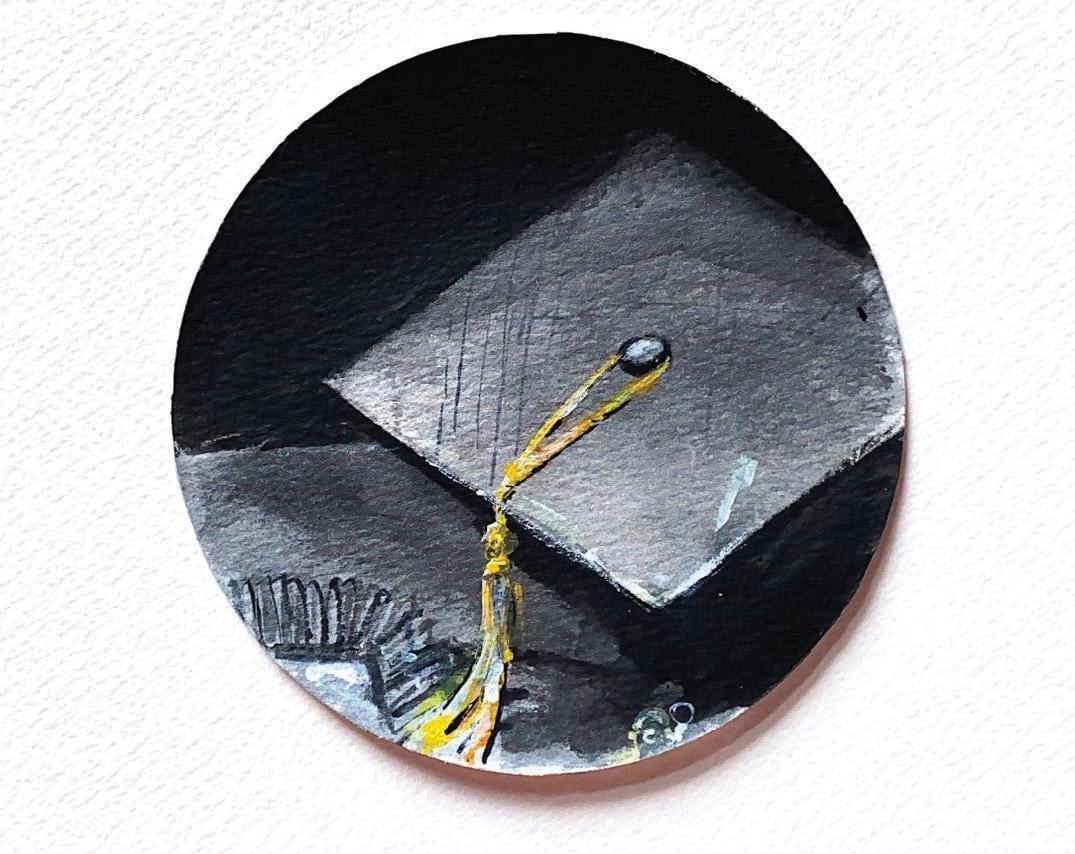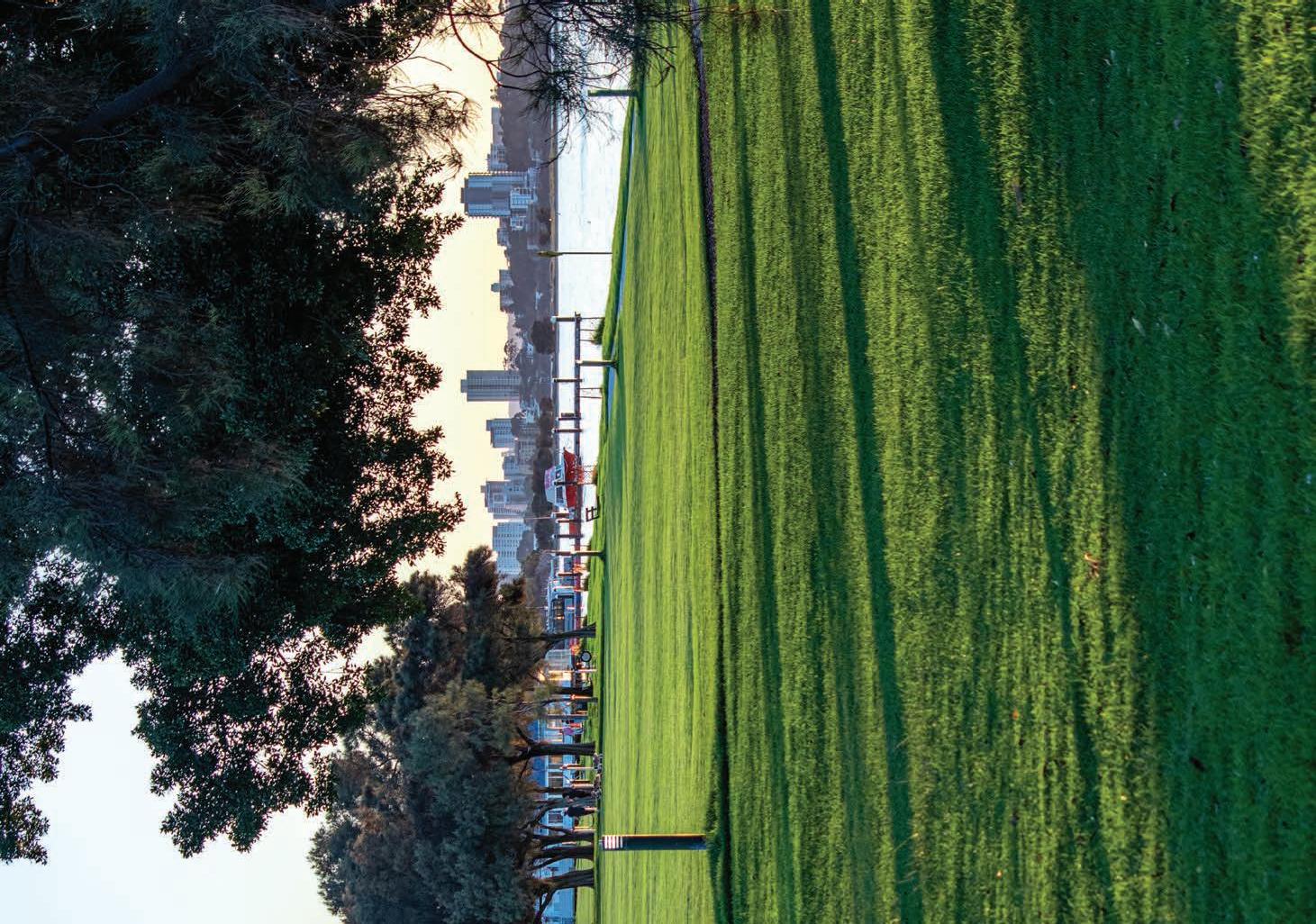
10 minute read
Heaven? – Rachel Denham-White
Taxation
Islamic economics has introduced an awe-inspiring tax code that is the envy of any heterodox economist. There are four distinct taxes, though I would note that the percentages should be adjusted upwards for any modern government to meet its expenses. These taxes are:
Advertisement
• Zakat: A 2.5% tax on savings (wealth) that is to be donated to the poor and indigent.
This is to be collected by the government and given to a waqf which is a religious benevolent trust. A tax on wealth instead of income was novel for the time and did wonders in addressing entrenched inequality. • Jizya: A per capita yearly tax that was levied on non-Muslim citizens (with exceptions).
The Jizya could easily be repurposed in
Australia as a tax on the ultra-wealthy. • Kharaj: A tax on the land of a citizen that is roughly analogous to council rates. • Ushr: A 10% tax on agricultural and later non-agricultural produce paid by businesses. The Ushr could be repurposed as our current income tax.
Despite the separation of Church and State, perhaps it is a time for economics to rediscover its moral underpinnings. It is simply not enough for us to teach economists “this is the way it is” without asking the fundamental question, “should this be the way it is?”. This economist sees Islamic economics as a vibrant and economically sound system that could easily be repurposed for our secular world.
Islamic Economics: In Short
• Famous Moment: When Iran tried to expropriate the Anglo-Iranian Oil
Company in 1954 and found out that capitalism has HANDS • Most Likely Use: Panicking bankers in casual conversation by calling them usurious stooges and rejecting the idea of interest. • Biggest Theoretical Whoopsie: Maybe arbitrary numbers from thousands of years ago are not the best way to write tax policy? At least the government pretends like there is a justification. • Big Names in School: Muhammad Baqir al-Sadr, Abu Nasr Al-Farabi, and Ibn
Khaldun • FMK: Banks, Justice, and Hoarders • Biggest Turn-Off: The Stock Market
An Anecdote From an Introverted Extrovert
kaylee cRanley still remains inconclusive in her Myer Briggs personality test results. I don’t know about you, but I have always This extends to the crisis of love/hate in struggled to reconcile my love/hate relationship regard to people entirely. One day, I’ll cram with being alone. It’s a battle I’ve been trying copious amounts of lunches with old friends, to understand my whole life, condensed into leave my rainy day playlist on repeat because the age-old question - “are you an introvert or I feel lonely, and hope to bump into anybody an extrovert?” - a competition between the of remote familiarity to strike up a somewhat outgoing crusader and the isolated lone-wolf. engaging conversation. Sounding extroverted enough yet?
Then, fast forward to the next day where I’ll avoid visiting any local shopping centre, dread the idea of making small talk with anyone, and where, as my phone screen lights up with replies, I’ll search for any excuse not to leave the comfort of my solitary fortress (usually filled with candles, Netflix binging, or a good book).
Working most of my life in retail, I pride myself on being a people-person. Yet some days, I come home with the need to peel off my social mask and crawl into a room of never wanting to socialise with another human being ever again. If you’ve engaged in extensive amounts of personality tests, BuzzFeed quizzes, or selfreflection, and yet can never quite decide if you’re an introvert or extrovert...let me tell you right now, you’re not alone.
It’s just over a month since the notorious day that enforces the pressure NOT to be alone: Valentine’s Day. In that time, I have reflected on the pressure around the idea that to be alone is to be lonely. The day that can turn even the least romantic into a hopeless one, somehow simultaneously has the ability to turn all singles into desperados; Hello, redownloading Tinder for the fourth time.
After the New Year’s Eve countdown had periodically reminded me of my aloneness, I could only anticipate the next holiday hitting and cutting much deeper. It’s the day that reminds us that our social media has remained on the ‘single’ status, regardless of how many flings or almost-there partners we may have met - “no, Mum, I don’t talk to that ‘lovely boy’ anymore”. I’ve since had the time to reflect on my urge to seek a quick ‘date and dash’. In the modern era, we are constantly inundated with the message that it is melancholy to be alone. Yet the age old proverb love yourself is still fiercely thrown into our faces. There’s no wonder we are confused as to which of the two to believe. Searching for answers, I realised I felt most alone when I was feeling down about myself, even if I was surrounded by plenty. I made sure every minute of every day I had people, distractions, and dates to counterbalance internal feelings of loneliness.
When you start to spend time working on yourself, you begin to walk a little taller, smile a little brighter, and radiate a little further. Whether you’re a ‘Class A Introvert’ or ‘Borderline Extroverted Champion,’ take the time to strengthen the one relationship that truly balances the rest — the relationship you have with yourself.
I know it sounds cliché, but once you start looking inside for happiness, you begin to stop desperately seeking it outside. That got me thinking — why aren’t we putting as much emphasis on everything else in our lives that makes us who we are? Our favourite foods, books, Spotify playlists, nighttime skincare routines? Why aren’t we getting to know the hobbies and interests of our one true greatest love — ourselves?
The taboo conceptualisation around being alone has forced us to surround ourselves on the outside, and left us feeling empty inside. We are allowed to enjoy our own company, even if that means being alone after hanging out with our 30 nearest and dearest the day before. Don’t be afraid to be alone in the company of the person that matters the most — yourself.
Annihilation: Cosmic Horror or Cosmic Heaven?
Rachel DenhaM-White is an avid reader and sci-fi enthusiast.
How do we perceive the inconceivable? How do we comprehend the unexplainable? How do we represent the unthinkable? And most importantly: how do we film it?
This is always the first question I ask when exploring the genre of cosmic horror. This style of horror was created by iconic writer (and highly problematic historical figure), H.P. Lovecraft, and intends to evoke a strong feeling of shock, disgust and utter helplessness. The genre deals in horrifying creatures and strange realities of such incredible, unthinkable proportions that even glimpsing them would be enough to shatter the human psyche. This style of writing sets out to make us feel small, cold, and alone as we try to reorient ourselves in the blank, unfeeling void of the cosmos.
There have been many great stories that have tapped into the Lovecraftian method, including The Thing, Alien, Color out of Space and Stephen King’s The Dark Tower series. It’s a complex genre that is always hard to represent. But when I think of undiluted, pure Lovecraftian terror, I always return back to Alex Garland’s 2018 film Annihilation, one of the best examples of how we can truly utilise film in visually presenting cosmic horror. Annihilation is based on the novel of the same name by Jeff Vandermeer, and is the first of the ‘Southern Reach’ Trilogy. The film is a standalone science fiction thriller and stars Natalie Portman, Oscar Isaac, Jennifer Jason Leigh and Tessa Thompson. The narrative centres on five female scientists exploring a strange, extraterrestrial environment called ‘The Shimmer’, which has expanded outwards from a meteor that crashed into a lighthouse off the coast of the United States.
The film is well-acted and well-paced, but by far the standout is found in its visual imagery, and director Alex Garland definitely had a hard job when considering the look of this movie. For how do you represent a natural landscape that has become fundamentally alien? Well, you start with tiny details. When the scientists are inside The Shimmer, nearly every shot is edited to incorporate some element of refraction. The sky, the clouds, grass, water, rock and air are all tinged with unnatural colours. It is a blinkand-you’ll-miss-it moment with some scenes, but it creates a setting both nightmarish and beautiful.
As they journey further into The Shimmer, the scientists come across strange freaks of nature.
Different flowers growing from the same bud, multi-coloured lichens and moulds, and eventually, animals with characteristics from different species. We realise that The Shimmer refracts like a prism, but it doesn’t refract light. The women discover their DNA is being changed, and they have to contemplate what they’ll soon turn into, be it plant, animal, insect, or something else entirely. It’s a time-honoured technique in body horror, as characters try to wrap their heads around bodily changes outside of their control. Each scientist has their own, very human reaction to the way their bodies are changing, expressing madness, fear, acceptance, or intrigue. And it’s horrifying to witness.
However, the most ingenious concept in this movie is how it portrays an antagonist. Because…there isn’t one. Yes, there is an alien involved in the story, but this is where the film’s sense of Lovecraftian terror is fully explored. The creature may seem evil to us, the characters may fear and hate it for what it is doing to them, but only because it is beyond our capacity to understand.
Garland stated in an interview for the film that aliens are often made human, or at least, human-like, through the characterisation of desire. Aliens may want to consume humans, use us for slave labour, or destroy our planet for resources, but they always want something. Aliens may be creatures that look completely different from our human forms, but typically they have recognisable elements - limbs, eyes, mouths. They can be bipedal or look like giant insects, but we can usually recognise and relate to a familiar element in their design. But not with Annihilation, as Garland strove to create what he called “an alien alien.”
“It’s not like us. It’s unlike us. I don’t know what it wants. Or if it wants.”
At first, we assume The Shimmer to be a hostile environment, with scientists referring to the mutations as “malignant tumours.” It is truly frightening how a creature can have the power to mutate and refract every fragment of DNA that enters the space around it. But even more frightening is to consider that it has no reason for doing so in the first place. That it does not want to hurt humans or remake them. It just does.
This is a movie which is difficult to talk about without giving away the entire plot, so I will finish off by saying Annihilation is a force to be reckoned with, not only in the cosmic horror genre, but in all of sci-fi. We are used to seeing the same designs for monsters and aliens recycled again and again, to the point where they become characters in their own right. Creatures of mystery and terror become recognized figures that we cheer for, slap on T-Shirts and dress up as for conventions. So, to see a film truly push the limits of showing the unknowable, trying to represent visually what we aren’t meant to understand, is a rare and wonderful experience. Through a combination of amazing creature design, intelligent concepts and breath-taking special effects, this film truly manages to capture the existential terror of Lovecraftian horror.

aRt By Pauline WonG

Art (along with front cover art) By hnin ei kyaW Win.

Editors’ Note: Pelican stands in solidarity with the protesters in Myanmar.
Parks on a Pedestal: Charles Court Reserve

se a shley B R o W Words and Photography B y If you venture a little beyond Matilda Bay looking to relax, eat, exercise, or even dog-watch, you may become trapped in the endless field of green that is Charles Court Reserve. A perfect place to simply stare into the river. Or, if you’re feeling competitive, there are various sports fields, an outdoor gym, and a skate park for whatever con/test calls to you.











